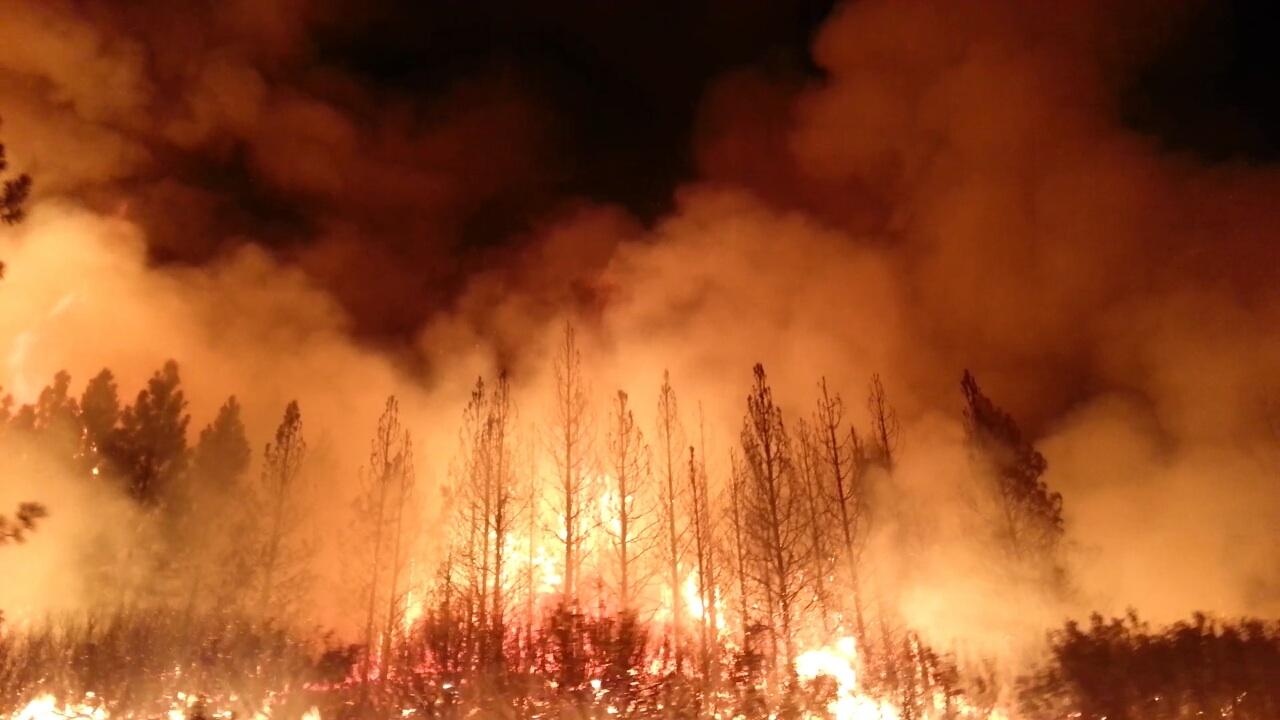
Fire fills the air with dangerous pollution. Innovation in air conditioning and filtration is needed now and in the future. Image: wikimiedia.
In California, Oregon, Washington and other states, Americans have recently seen a preview of climate change. Earlier this year, Australia suffered record bushfires. Africa experienced the worst drought in decades, threatening energy supplies and food security in Zambia and Zimbabwe. Longer, hotter, dry seasons set the stage for drought, and vulnerability to fires caused by a number of factors. Forest management and human actions are surely factors, but a warming climate intensifies the problem. Severe conditions will force climate migration, as many move to safer locations. World Weather Attribution consortium warns that if global temperatures rise by 2C, fires will occur four times more often.
Challenge: design a better air-conditioner. Image: wikimedia.
Building better fire mitigation includes addressing air pollution health hazards. Air-conditioners and air filtration systems are ready for a major leap in technology. In the 1980’s, we made the alarming discovery that refrigerants like those in cooling appliances were emitting chloroflourocarbans (CFCs), depleting Earth’s ozone layer. Response was a global accord, the 1987 Montreal Protocol, to stop using harmful pollutants in cooling devices. But now we still need something to replace CFCs, and so enter HFCs or hydrofluorocarbons. These are also problematic: HFCs accelerate global warming at 11,000 times the rate of carbon dioxide. Kigali Amendment to the Montreal Protocol legislated the phasing out of HFCs. While 102 countries have signed on and ratified their participation, some countries have not. Sadly, those non-participants are some of the world’s biggest users of HFCs. It’s a missed opportunity because we could save 460 billion tons of dangerous emissions over the next 40 decades. If we doubled energy efficiency of air-conditioners, we could save $2.9 trillion by 2050. Here’s a searchable database of non-HFC cooling technologies. Global energy demand for air conditioners is expected to triple by 2050. Want to do well, while doing good? Build a better air-conditioner.
Carlowicz, Michael. “Drought Threatens Millions in Southern Africa.” 1 December 2019, Earth Observatory/NASA. https://earthobservatory.nasa.gov/images/146015/drought-threatens-millions-in-southern-africa.
Cool Technologies Database. “Sustainable Cooling Database.” Environmental Investigation Agency (EIA). https://cooltechnologies.org/
Dutta, Meghna. “Top Air Conditioners that double up as Air Purifiers too.” 1 May 2018. The Indian Express. https://indianexpress.com/article/technology/techook/top-air-conditioners-that-double-up-as-air-purifiers-too-5158512/
Environmental Investigation Agency (EIA). “HFC-free Technologies: Putting the Freeze on HFCs: A Global Digest of Available Climate-friendly Refrigeration and Air-Conditioning Technologies. https://eia-global.org/initiatives/hfc-free-technologies/.
EIA. “Unlocking Kigali Amendment Climate Benefits.” https://eia.-global.org/
Ghosh, Pallab. “Climate change boosted Australia bushfire risk by at least 30%.” 4 March 2020. BBC.com.https://www.bbc.com/news/science-environment-51742646.
Litwin, Evan. “The Climate Diaspora: Indo-Pacific Emigration from Small Island Developing States.” 1 May 2011. University of Massachusetts Boston. DOI: 10.2139/ssrn.1912859. Corpus ID: 128341843.
Lustgarten, Abrahm with photographs by Meridith Kohut. “How Climate Migration Will Reshape America.” 15 September 2020. The New York Times. https://www.nytimes.com/interactive/2020/09/15/magazine/climate-crisis-migration-america.html?referringSource=articleShare.
Noor, Dharna. “We Essentially Cook Ourselves if We Don’t Fix Air Conditioning, Major UN Report Warns. Earther. https://earther.gizmodo.com/we-essentially-cook-ourselves-if-we-don-t-fix-air-con-1844416667%3Futm_medium=sharefromsite&utm_source=email&utm_campaign=bottom.
Pearce, Fred. “Thirty Years After Montreal Pact, Solving the Ozone Problem Remains Elusive.” 14 August 2017. Yale Environment360. https://e360.yale.edu/features/thirty-years-after-the-montreal-protocol-solving-the-ozone-problem-remains-elusive/
United Nations. “The Montreal Protocol on Substances that Deplete the Ozone Layer.” United Nations Ozone Secretariat.https://web.archive.org/web/20130420100237/http://ozone.unep.org/new_site/en/Treaties/treaties_decisions-hb.php?sec_id=5.
United Nations. “Amendment to the Montreal Protocol on Substances that Deplete the Ozone Layer,” Kigali, 15 October 2016. United Nations Treaty Collection, Chapter XXVII Environment, Registration 1 January 2019, No. 26369, Status: Parties 102. For the text of the treaty, https://treaties.un.org/doc/Treaties/2016/10/20161015%2003-23%20PM/Ch_XXVII-2.f.pdf/
Building the World Blog by Kathleen Lusk Brooke and Zoe G. Quinn is licensed under a Creative Commons Attribution-NonCommercial-NoDerivs 3.0 Unp

